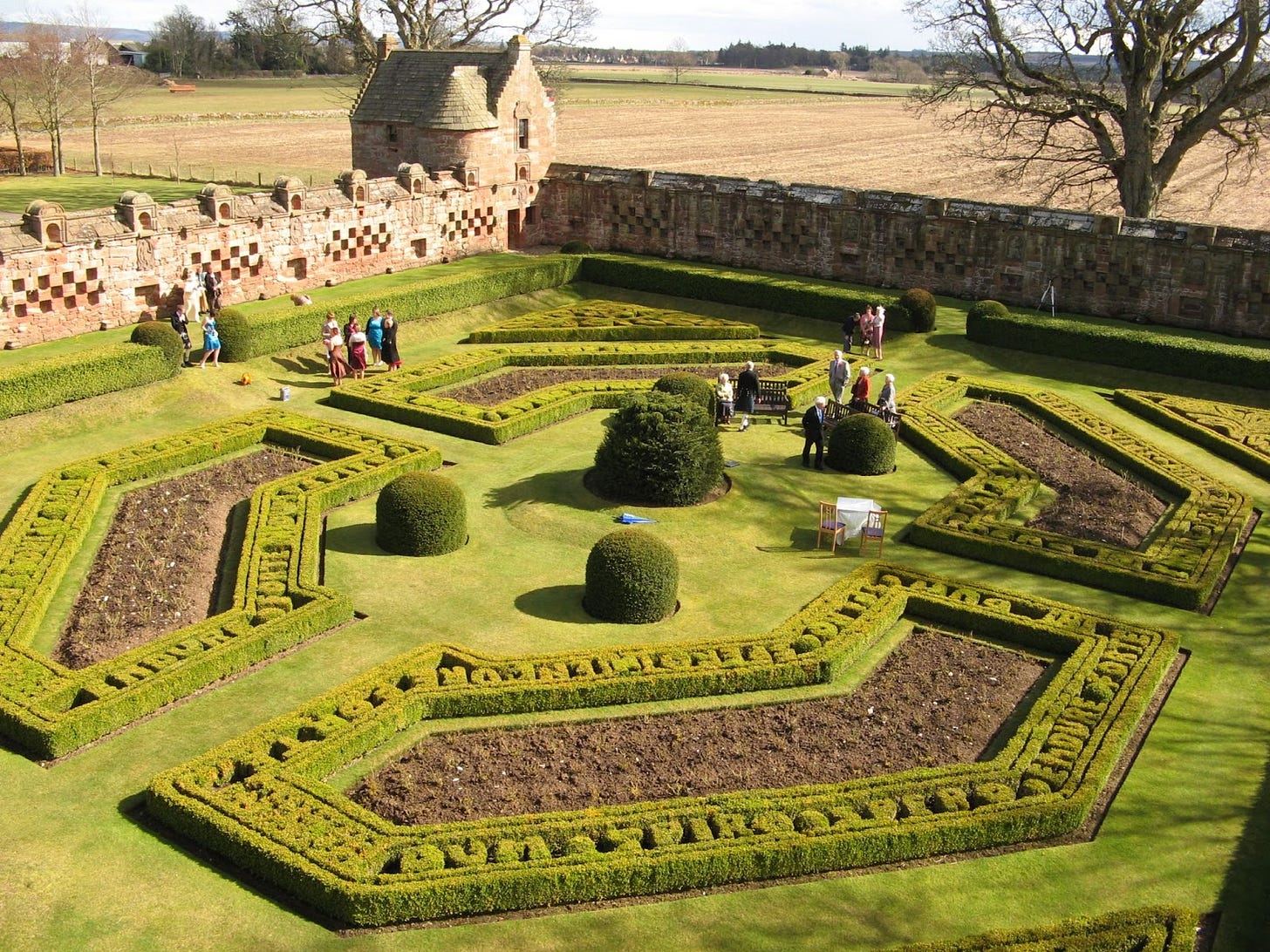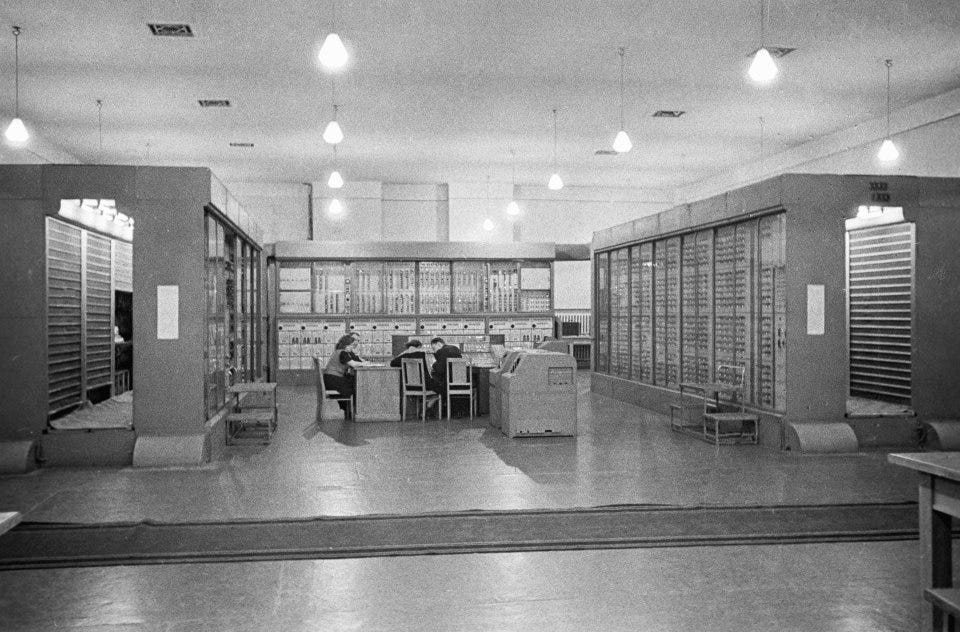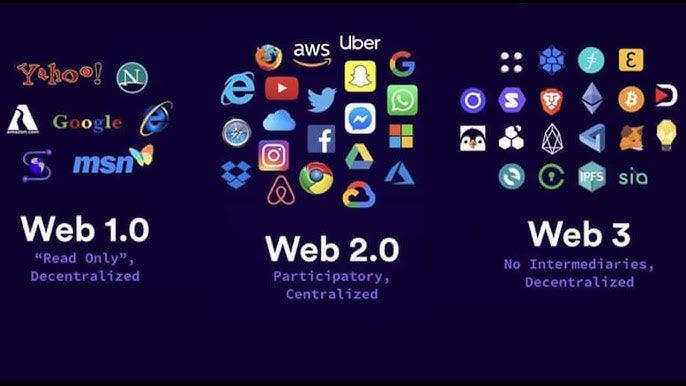Gardens are nice—for a while. What lies beyond the walls?
There’s something lacking about today’s internet, isn’t there?
Since the early ‘90s, we’ve dreamt up grand metaphors for what the internet could be:
An open frontier.
A digital playground.
A virtual city.
But it’s not really like that.
Instead of exploring a boundless arena of interactivity and commerce, we’re stuck in the walled gardens of the big platforms.
Instead of opening up new doors and discovering incredible places, we’re hanging out in the same few dusty rooms—YouTube, Instagram, TikTok, Netflix—consuming “content” but starving our imaginations.
The Internet (with a capital “I”) could be so much more. We all feel this.
How did we get here? Where is the internet going? And where could it go?
This is the first post in a series about the future of online experience and the quest for a better internet.
In the weeks to come, we’ll meet some of the people who are working toward a more open, vibrant internet, and, along the way, we’ll navigate a sea of alternate visions: Web 3.0, the fediverse, the metaverse, the agentic web.
…clearly, there’s no shortage of buzzwords.
I’m less concerned about what the next phase of the internet is called (i.e., how it’s pitched to and by return-hungry VCs) and more concerned with what’s literally happening on the ground and in the “cloud”—prepare yourself: more marketing speak lies ahead.
I’ll sketch out a few possible timelines for how things might evolve, and lay out ways that you can get involved and steer the ship in whatever direction you decide.
For now, let’s understand the nature of the Internet today and how it became dominated by a few powerful players.
The Open Web (Web 1.0)
In the beginning, there were computers. Computers the size of entire rooms.
You now have more compute in your pocket.
In the 1960s, ARPANET connected four universities in California and Utah and got some of these massive computer-rooms talking to one another.
The DoD funded it, but the researchers who built it had bigger dreams than military communications. They imagined a world where any computer could talk to any other computer, where information could flow freely between researchers and institutions.
By the 1970s, they'd invented email and the fundamental “protocols” (more on these soon) that still run the internet today.
Through the 1980s, this network of networks grew from a few dozen universities to thousands of connected institutions worldwide. This period gave birth to commercial “online services,” like CompuServe and Prodigy, which provided tech savvy consumers their first taste of being online. But it was clunky: these were the first digital fiefdoms. You couldn't send an email from CompuServe to someone on Prodigy.
In 1990 (the year I was born) Tim Berners-Lee invented the World Wide Web, which made the internet actually usable for the masses. Before the web, you needed to know specific commands and addresses. After the web, you just clicked on links. This new era of connectivity coincided with the rise of personal computing (hardware) and operating systems (software).
Here’s how Brian McCullough describes the advent of the web in How the Internet Happened:
The web came in 1990, just as Windows was beginning to take computers into the majority of the world's homes and offices, and just as the computer mouse and the graphical icon were making computing point-and-click intuitive for everyday people. The web lived in this world. You navigated the web with a mouse, you clicked on links, and the whole thing moved with the innate, logical simplicity of how human thought seems to work: jumping from one idea or association to another, flowing backward and forward in the direction of idea and inspiration, reference and retort. The web took the fundamental concept of the Internet (connecting computers together) and made it manifest through the genius of the hyperlink. One website linked to another. One idea linked to another. This metaphor of the link made the whole conceptual idea of the Internet, of linking computers together, of linking people's minds together, of linking human thought together, finally and wonderfully real.
What’s more, the web promised something the online services couldn't: one set of open standards that anyone could use. No more walled gardens. Just protocols.
Protocols like HTTP and TCP/IP might sound like trivia-night fodder, but they’re the backbone of the Internet. These universal rules and standards are what make the internet tick. They’re what make it “open.”
Fortunately, thanks to the innovators of the ‘90s (including Mosaic, Yahoo, Netscape, and Microsoft), users could eventually enter domain names and navigate the web without needing to understand the complex machinery behind it—like driving a car without having any clue how the engine works.
The ‘90s was the era of personal websites, webrings, and "surfing" the net. Colorful, static, read-only pages: like a computerized book, but online and searchable. The early web was slow and functionality was limited, but it felt like a revelation.
Then, for better or worse, it got monetized.
The Algorithmic Web (Web 2.0)
In the early 2000s, the web got... sticky. The open, decentralized spirit of Web 1.0 gave way to platforms that centralized control, prioritizing engagement, scale, and—most important of all—retention.
The formula became crystal clear through the ‘00s and ‘10s: build something incredibly useful (Buy whatever you want on Amazon! Connect with your friends on Facebook! Share and watch videos on YouTube!), and then do whatever necessary to keep users on platform.
Don’t get me wrong: the first phase of Web 2.0 was a thrilling time. Suddenly, anyone with a keyboard could be a creator. Blogs exploded, powered by platforms like WordPress and Blogger. YouTube made every teenager in the world a potential filmmaker. Twitter gave you an outlet and an audience for your thoughts, 140 characters at a time.
But eventually algorithmic feeds replaced chronological ones. Instead of seeing what your friends posted in the order they posted it, you saw whatever the site’s algo decided you should see.
Jack Conte (the founder of Patreon) calls this the "Death of the Follower." You might follow 500 accounts on Instagram, but the algorithm shows you the same 20 over and over.
The direct relationship between creator and audience—that nostalgic thing from Web 1.0 where you bookmarked someone's site and checked it daily—got intermediated by machines optimizing for "engagement."
And here's the kicker: we all opted in. The walled gardens were kickass. All we had to give up was... the original promise of the internet.
The horizontal “digital frontier” (picture the grid from TRON stretching to infinity) became a vertically scrollable shopping mall. The weird, creative playground of the ‘90s open web became a closed casino designed to keep us pulling the lever just one more time.
Today it’s impossible to overstate the degree to which the internet has become fundamentally algorithmic; algorithms mediate our experience of every single major platform and online interaction. What was once a soft trend is now a calcified reality.
And none of this is exactly new. Jaron Lanier wrote You Are Not a Gadget: A Manifesto about precisely these issues in 2011. To read more about the trajectory of Web 2.0, check out Shoshana Zuboff’s The Age of Surveillance Capitalism (2019) on data exploitation, Tim Hwang’s Subprime Attention Crisis (2020) on the attention economy, and Kyle Chayka’s Filterworld: How Algorithms Flattened Culture (2024) on how algorithms have shaped culture.
So what’s next?
What you'll notice about the image above is that you recognize all of the Web 2.0 giants, but only a few (perhaps just one or two) of the logos in the Web 3.0 category.
That's because—and at this point I’m laying my cards on the table—Web 3.0, as it’s often pitched, can feel like a pipe dream, a utopian vision where decentralized apps topple the Metas and Googles overnight. But the reality is murkier: while some Web 3.0 projects show promise, the platforms’ grip remains tight
The notion that the Metas, Amazons, Apples, Googles of the world will give way to an open suite of decentralized apps remains to be seen.
Here's the thing: the platforms won. They won so completely that for many people under 25, "the internet" is Instagram, TikTok, and YouTube.
The idea that you could build your own website, host your own content, and own your own corner of the digital world is completely foreign to them.
So while I applaud the efforts of decentralization advocates (we’ll dig into this more next week), we also have to think pragmatically through the platforms themselves. It’s sort of like how all Renaissance painters had to paint in the vocabulary of religious iconography. They pushed and pulled against the norms of their time and the demands of their patrons in subtle ways, one Madonna and Child at a time; it took a few centuries for modern art to unleash itself on the world.
Thankfully, timelines are much more compressed now—progress moves exponentially faster—but change still takes time. To shape the next generation of the Internet, we should collectively be much more thoughtful about how we navigate both on and off platform. And with that…
Here’s Quest 24:
Build a Better Internet
A lofty goal! For now, let’s just take the first step and escape walled gardens…at least some of the time.
You might be wondering: what’s wrong with closed platforms? Having content served to me on a silver platter in the comfortable UI of YouTube/Instagram/TikTok is great. But it’s sort of like eating candy: delicious, addictive, and also bad for you. There’s no art in it. No magic. And we’re just painfully overdue for a new medium, a new creative vehicle to think with and through, Marshall McLuhan Style. Doesn’t that sound nice?
I think we have to start by putting our brains outside of the walled gardens whenever possible. I’m not saying to delete iMessage. The network effects are simply too powerful to ignore. But at least look for opportunities to be online in different ways. Here are some great places to get started:
So here’s your challenge: take one action this week. Set up a personal site. Join a decentralized network. Subscribe to a creator’s newsletter. Just…don’t mindlessly scroll.
Whatever it is, make it a step toward an Internet that’s less casino, more playground. Share your wins in the comments below.
The quest continues next week—thanks for reading!








